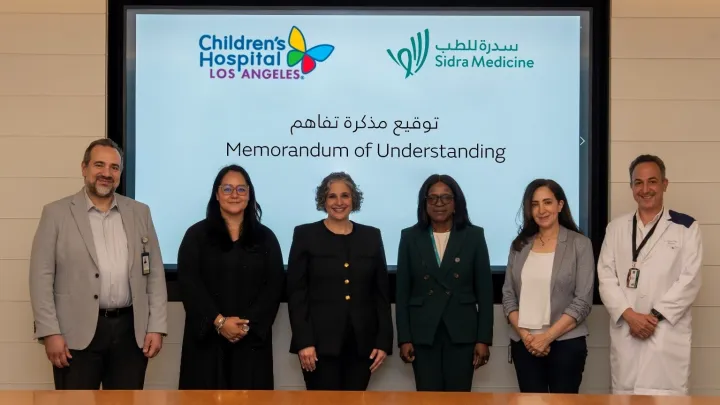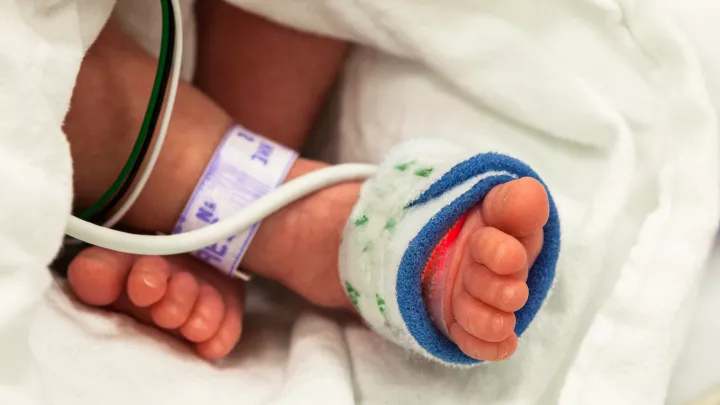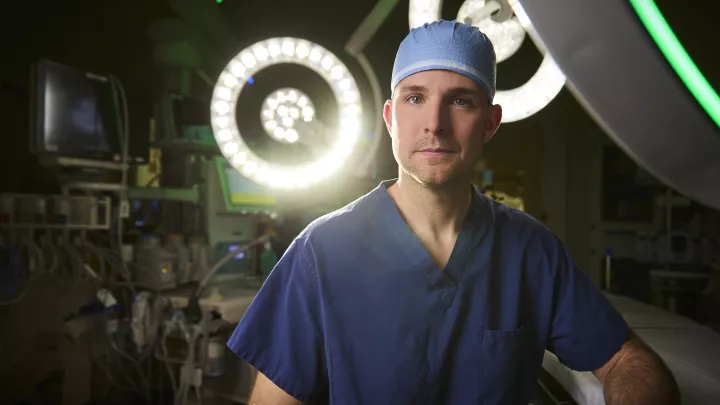Single Ventricle Program
At Children’s Hospital Los Angeles, we have a special program to treat children with single ventricle defects. Single ventricle defects are a type of congenital (from birth) heart defect. They affect the development of one of the heart’s lower chambers. These rare disorders require a series of surgeries so the heart can function adequately.
If your child has a single ventricle defect, it’s important to get treatment at a hospital with a dedicated single ventricle program. The first surgery to correct these defects usually happens in the first few weeks of a child’s life. The heart is about the size of a walnut at this age. Our surgeons specialize in performing these complex procedures on such tiny hearts. One of our single ventricle experts can help you choose the best treatment path for your child.
Single Ventricle Program: Why Choose Us
The Heart Institute routinely ranks among the top pediatric cardiology and heart surgery programs nationwide according to U.S. News & World Report. The same report lists CHLA as one of the top 10 children’s hospitals in the nation. This expertise enables us to successfully treat children with the most complex single ventricle defects. Our Single Ventricle Program offers:
- Excellent outcomes: Our comprehensive program includes several treatment options and intensive monitoring between surgeries, which help improve outcomes. We use advanced imaging to see the anatomy of your child’s heart and figure out the best treatments.
- Interstage monitoring: The time between the first and second single ventricle palliation surgeries is called “interstage.” We have a dedicated team exclusively created to monitor your child closely during this time to quickly identify and treat complications that may arise. Intensive interstage monitoring also helps us decide when your child is ready for the next surgery.
- Leading-edge research and treatment: Our doctors provide clinical care and conduct research. This dual focus gives your child access to the latest advanced treatments not available elsewhere. For example, CHLA is part of a consortium researching umbilical cord blood as a possible treatment to delay or prevent heart failure in children with hypoplastic left heart syndrome (HLHS).
- Prenatal diagnosis: Single ventricle defects are usually diagnosed during pregnancy. Our Fetal Cardiology Program diagnoses heart problems during pregnancy using a fetal echocardiogram. This noninvasive imaging test allows doctors to look at your baby’s heart. We provide pregnancy care guidance to help you plan for a safe delivery and discuss treatment options for your baby after birth.
- World-renowned experts: We have one of the most experienced pediatric heart surgery team in the Western U.S. Our surgeons perform more than 900 surgeries a year—and 20% are on newborns. Doctors from around the world refer patients to us because of our proven record of success.
- Long-term, centrally located care: Children with these defects often need care from cardiology and other specialties. And about 10% of children need a catheterization procedure before or between surgeries. Your child conveniently gets this care on the same floor—and we help you plan and track it all.
What Is a Single Ventricle Defect?
A healthy heart has four chambers:
- Two upper chambers called atria
- Two lower chambers called ventricles
It also has four valves that control blood flow into and out of the ventricles. A single ventricle defect may affect the size, development or valve of a ventricle.
When one of the ventricles doesn’t work well, the body doesn’t get enough oxygenated blood. Ventricle or valve defects on either side of the heart cause this problem in different ways:
- Right ventricle or valve defect: The heart doesn’t pump enough blood to the lungs to get oxygen.
- Left ventricle or valve defect: The heart doesn’t effectively pump the oxygenated blood to the body.
Children with these defects need surgery soon after birth to help their bodies get enough oxygen to function and grow.
Single Ventricle Conditions We Treat
We treat:
- Double inlet left ventricle
- Double outlet right ventricle
- Heterotaxy syndrome heart disease
- Heterotaxy syndrome related single ventricle cardiac defects
- Hypoplastic left heart syndrome
- Pulmonary atresia with intact ventricular septum (PAIVS)
- Tricuspid atresia
- Unbalanced atrioventricular canal
Single Ventricle Defect Treatment
There are two routine ways to treat single ventricle defects:
Biventricular repair or conversion
Biventricular repair or conversion creates two working ventricles. This process allows your child’s heart to function properly.
Whenever possible, we use a biventricular approach to give your child the best long-term outlook. It has more short-term risks but better long-term outcomes. Our biventricular surgical options include:
- Biventricular repair: Surgeons create two working ventricles during one surgery (for mild defects).
- Biventricular conversion: After a child has single ventricle palliation to create one working ventricle, surgeons convert the heart to have two functioning ventricles. Biventricular conversion procedures are harder to perform than single ventricle palliations. CHLA is one of the few hospitals in the U.S. with the expertise to perform these biventricular surgeries.
- Staged recruitment: If the ventricle is too small for biventricular repair or conversion, surgeons perform a series of procedures to prepare the heart for a future biventricular conversion.
Single ventricle palliation
Single ventricle palliation is a series of open-heart surgeries. These procedures restructure the heart and lungs to work with one ventricle, instead of two.
Palliation is the traditional approach to treating single ventricle defects. While it’s easier to perform than biventricular repair or conversion, it’s more likely to cause long-term complications. However, many children do well with this series of surgeries.
Single ventricle palliation for hypoplastic left heart syndrome, as an example, involves three surgeries:
- Norwood: Surgeons perform the Norwood procedure soon after birth. This procedure allows one ventricle to pump blood to the lungs and body. Surgeons use a shunt (small tube) to direct blood to the lungs. The type and location of the shunt depends on your child’s specific anatomy. Your child will eventually outgrow the shunt, so this surgery is a short-term fix. It gives your child time to grow and get stronger before the next surgery.
- Glenn: Surgeons usually perform the Glenn procedure when your child is 4 to 8 months old. During this procedure, surgeons redirect blood flow from your child’s upper body to the lungs. Bypassing the heart and sending blood directly to the lungs eliminates the need for the shunt. Surgeons usually remove the shunt placed during the Norwood.
- Fontan: Surgeons usually perform the Fontan procedure when your child is 1.5 to 3 years old. This procedure redirects blood flow from the lower body and abdomen directly to the lungs. Children's Hospital Los Angeles has a dedicated Fontan Program to provide specialized care for your child.
Our Ventricular Assist Device Program has advanced technologies to support your child’s heart function between surgeries, if needed.
Sometimes, single ventricle palliation doesn’t fully resolve the problem. In these cases, your child’s surgeon may recommend biventricular conversion or a heart transplant.
Interstage monitoring
Single ventricle surgeries may happen over a few years, so we monitor your child during this time. Keeping a close eye on a child’s condition improves outcomes between surgeries. Monitoring includes:
- Home pulse oximetry machine to check your baby’s oxygen saturation
- Weekly phone calls from a nurse practitioner to check on your child’s condition
- Appointments every two weeks to examine your child
The interstage monitoring team includes your child’s:
- Surgeon
- Cardiologist
- Nurse care manager
- Dietitian
- Social worker


